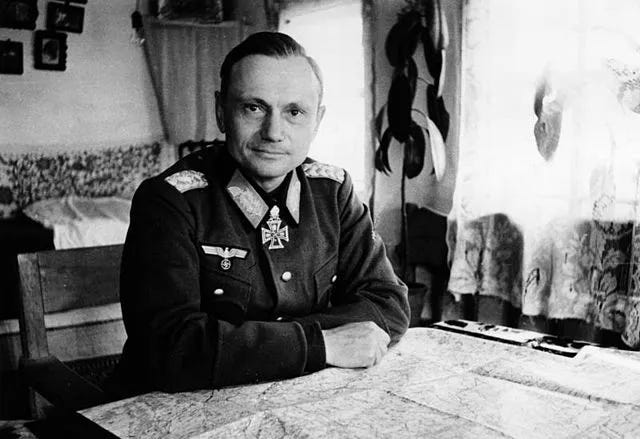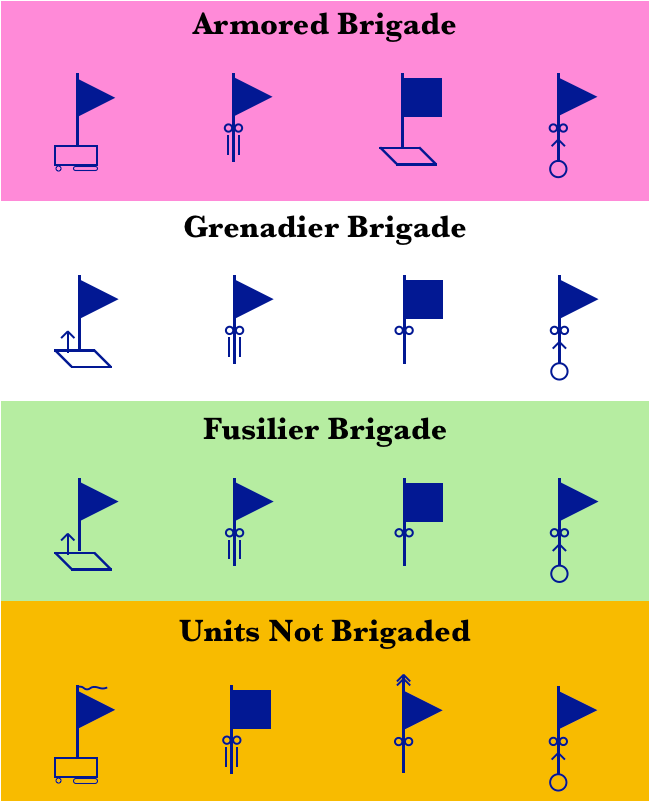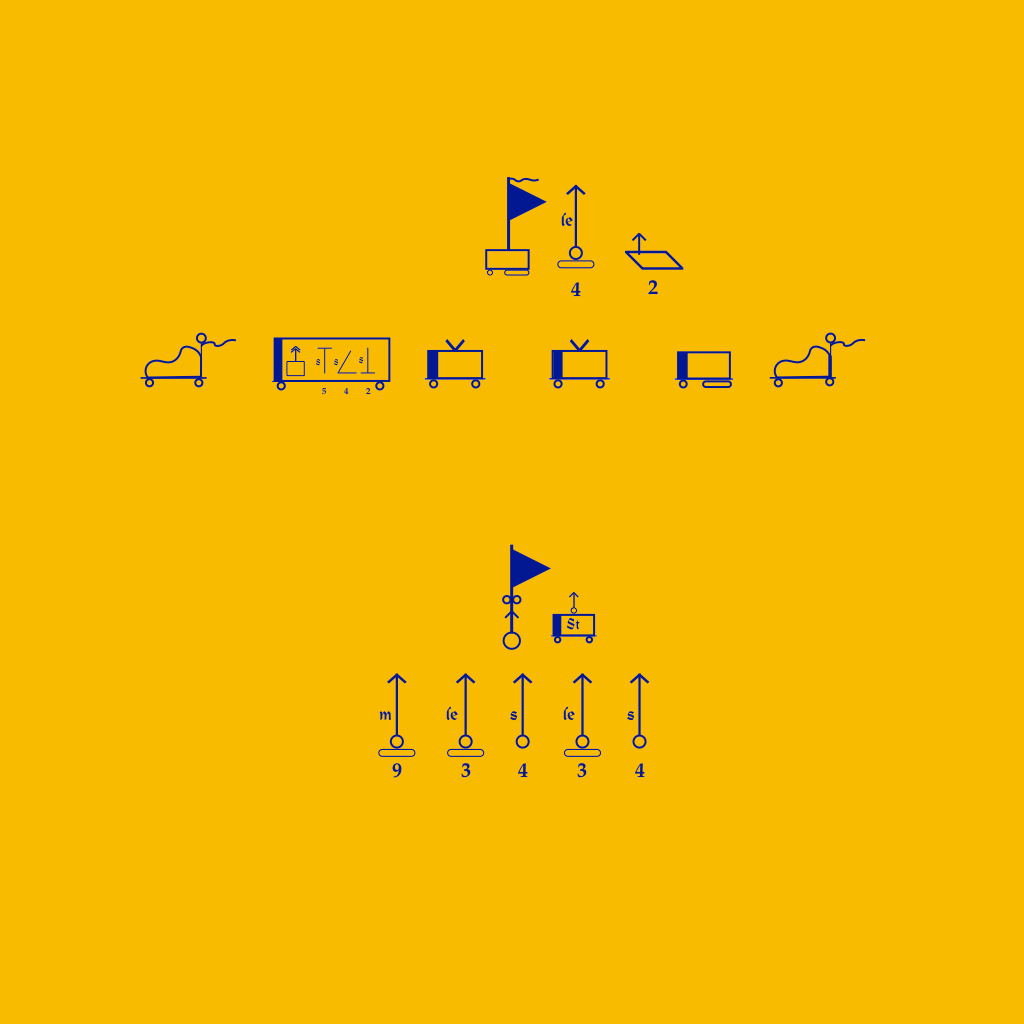Slimming Down Großdeutschland
Imaginary Armies
Between 1939 and 1944, Hermann Balck commanded a variety of mechanized units and formations. In those years, he developed a reputation for pushing his troops and equipment to their limits in order to accomplish seemingly impossible tasks. From January to May of 1943, he commanded the Großdeutschland Division, a unique outfit with a structure that seemed to have more to do with the Hitler’s desire to lavish resources upon his Lieblingstruppe than any operational concept.
Balck’s assignment to command the Großdeutschland Division stemmed from a plan to create a powerful and permanent reserve for the German headquarters in charge of the entire Russian Front. This reserve was to consist of two armored corps, one from the Army and the other from the SS. As the Army armored corps was to include the Großdeutschland Division and be commanded by Balck, Balck was given temporary command of that division in order to familiarize himself with its peculiarities. Though the plan for creating the operational reserve never materialized, it provided the opportunity for an interesting “thought experiment.”
Near the end of his short tour with the Großdeutschland Division, General Balck proposed considerable changes to that division’s organization. Großdeutschland had begun life as a reinforced infantry regiment. In the course of four years, enough additional units had been added to Großdeutschland, to make it into a very large division. Indeed, Großdeutschland had the infantry and artillery strength of a standard infantry division as well as more tanks, assault guns, and reconnaissance vehicles than most armored divisions. Indeed, in Balck’s opinion, there were enough men and weapons to make two armored divisions. In addition, Großdeutschland had lots of “extras” like multiple rocket launchers (Nebelwerfer), a bridging company, and a battalion of anti-aircraft guns.
Balck found this organization unwieldy. Not only did he find that the extra resources did little more than translate into extra casualties, he disliked having to spend so much time task organizing. He therefore proposed, in a letter to Heinz Guderian, the organization of the Großdeutschland Division on completely different lines.
Balck wanted to divide Großdeutschland into three brigades. One of these would be an armored brigade. The other two would be infantry brigades. Each of the brigades would be a self-contained combined arms formation designed to move and fight as a single entity.
In addition to the three brigades, the new Großdeutschland division was to have three non-brigaded combat units. These were variants of units that already existed in the Großdeutschland Division: the field artillery regiment, the reconnaissance battalion, the anti-aircraft battalion.
Marvelous to say, there was no anti-tank battalion in the division that Balck designed. Rather, he proposed the dissolution of the existing anti-tank battalion in order to use its elements, and particularly its self-propelled anti-tank guns, to beef-up his two infantry brigades.
The combat troops of the armored brigade were to be mounted exclusively in tracked or half-tracked vehicles. This allowed the brigade a degree of cross-country movement that would have been impossible for the division as a whole to achieve. The ability to move cross-country, in turn, would have allowed an unprecedented degree of tactical flexibility.
The heart of the armored brigade was the armored regiment. Balck put his two existing battalions of Mark IV tanks into this regiment. He also called for the expansion of the existing Tiger company into a full battalion of heavy tanks.
The infantry component of Balck’s proposed armored brigade consisted of a single battalion. Mounted in armored half-track vehicles, this Hausinfanterie was chiefly concerned with close co-operation with tanks. Nonetheless, its structure resembled that of the truck-mounted infantry battalions of the infantry brigades.
Battalions of both types consisted of three rifle companies and a heavy company. Likewise, the rifle companies of both the armored brigade and the infantry brigades were equipped for a high degree of independent action, with four heavy machine guns, two 81mm mortars, and two man-pack flamethrowers.
Apart from the their mode of transport, the chief difference between the two types of rifle companies lay in the number of light machine guns allocated to each. The truck-borne companies received eighteen light machine guns, which allowed the issue of two such weapons to each rifle squad. The armored rifle companies, however, rated thirty-four such weapons. (The additional light machine guns, it seems, were the ones mounted on the half-tracks.)
The heavy companies of the two types of infantry battalions, each of which was made up of four 120mm mortars, a platoon of combat engineers, and an anti-tank gun unit, also had much in common. (In the case of truck-borne battalions, the anti-tank gun unit was a platoon of five 75mm anti-tank guns. In the case of the armored infantry battalions, it operated a single 75mm anti-tank gun.)
The field artillery battalion organic to Balck’s proposed armored brigade was not, as might be supposed, equipped with self-propelled artillery pieces. Instead, the battalion consisted of three four-piece batteries of light (105mm) gun-howitzers, each of which was pulled by a fully tracked prime mover. (Balck did not specify exactly what these might be, but the Raupenschlepper Ost is a prime candidate.)
Balck thought poorly of self-propelled artillery systems. In an interview conducted long after the end of the war, he argued that such weapons were less reliable than towed guns. (While mechanical troubles with a prime mover disabled one vehicle, mechanical troubles with the carriage of a self-propelled piece took both the gun and its transport out of the fight.) He also characterized self-propelled guns as “very large and visible and vulnerable to being found by air reconnaissance.”
Balck’s dislike for self-propelled artillery pieces did not extend to anti-aircraft guns. His plan for the armored brigade called for the allocation of such weapons to the Flak battalion of the armored brigade, the Flak battalion of the division as a whole, and each of the battalions of the field artillery regiment.
There were three separate pioneer units in the armored brigade. The first was the company of “armored combat engineers” [Panzer-Pioniere] of the brigade as a whole. The second was the pioneer platoon of the armored infantry battalion, and the third the pioneer platoon of the tank regiment. Like the Panzer-Pionier company, the two combat engineer platoons were mounted in armored half-tracks.
Just as the armored brigade was, in essence, a heavily reinforced tank regiment, each infantry brigade might well be described as a “permanent regimental combat team.” As such, it consisted of an infantry regiment, an anti-aircraft battalion, a field artillery battalion, an assault gun battalion, and a company of combat engineers.
The infantry brigades bore the honorific titles of their infantry regiments. Thus, the brigade built upon the foundation of Grenadier Regiment Großdeutschland became Grenadier Brigade Großdeutschland, while the brigade that was home to Füsilier Regiment Großdeutschland became Füsilier Brigade Großdeutschland.
The terms Grenadier and Füsilier, as used by the German Army of the Second World War, had three sets of meanings. They could be purely honorific terms, reminding members of a particular unit of their regimental heritage. Starting in 1943, they distinguished ordinary infantrymen (Grenadiere) from those infantrymen (Füsiliere) who served in divisional reconnaissance (Füsilier) battalions. Finally, in the case of two elite divisions (Großdeutschland and Feldhernhalle) the terms were used to distinguish otherwise similar infantry regiments from each other.
In the case of the Großdeutschland Division, the chief functional difference between the Füsilier and Grenadier regiments lay in the realm of motor transport. The primary personnel carrier for the Grenadier regiment was the Opel Blitz 36S medium truck, a vehicle that corresponded roughly, in both size and payload, to an American 2 1/2 ton truck. The men of the Füsilier regiment, on the other hand, traveled in vehicles in the 5/4 ton range. (As both the Füsilier and Grenadier regiments were designed for dismounted combat, this difference in means of conveyance had no impact on the basic structures of those units.).
Balck proposed two substantial alterations to the internal organization of the Grenadier and Füsilier regiments. The first of these was the dissolution of the heavy battalions of each regiment, the second the disbandment of the fourth rifle company in each of the infantry battalions. Taken together, these measures would provide the people needed to create the armored infantry battalion for the armored brigade and a Volkswagen-mounted reconnaissance company for each motorized infantry regiment.
The transfer of a battalion of light (105mm) gun-howitzers to each brigade would have left Artillerie Regiment Großdeutschland with a headquarters, an observation (Beobachtungs) battery, and a single field artillery battalion. This, in turn, created the opportunity for the transformation of that regiment into an artillery unit of a very different sort. To this end, Balck proposed that the artillery regiment be provided with a battalion of multiple rocket launchers (Nebelwerfer), a battalion of 100mm heavy guns, and a battalion of 210mm heavy howitzers. (The first of these units was already present in the division. The other two would have to be found elsewhere.)
When combined with the pre-existing observation battery, the three additional battalions would allow Artillerie Regiment Großdeutschland to function as corps artillery. That is, while the light battalion attached to each brigade provided for the immediate needs of that formation, the artillery regiment would perform missions of interest to the division as a whole. These would include counter-battery fire and cooperation with the brigade serving as the main effort [Schwerpunkt] of the division.
To protect Artillerie Regiment Großdeutschland against the growing threat of Soviet ground attack aircraft, Balck proposed that each battalion be provided with four self-propelled 20mm anti-aircraft guns. Similarly, as Nebelwerfer were poorly suited to the task of dealing with tanks at close range, each battery of multiple rocket launchers were to be provided with a single 75mm anti-tank gun.
In April of 1942, when the Großdeutschland Regiment was expanded into a division, it was provided with the Motorcycle Battalion [Kradschützen-Bataillon] Großdeutschland. Mounted in armored cars, half-tracked vehicles, and amphibious Volkswagens, this unit possessed few of the machines that gave it its name. All of the changes that Balck proposed to the structure of unit, which had since been re-designated as the Armored Reconnaissance Battalion [Panzeraufklärungs-Abteilung] Großdeutschland, involved the provision of additional heavy weapons. In particular, he proposed the allocation of two assault guns, four self-propelled light (20mm) anti-aircraft guns, four heavy (120mm) mortars, and two heavy (150mm) infantry guns. (The heavy mortars and heavy infantry guns replaced, respectively, medium mortars and light infantry guns.)
Balck proposed but one significant structural change to the existing pioneer battalion of the Großdeutschland Division: the transfer of the armored pioneer company to the armored brigade. However, when combined with the raising of complete pioneer companies for each of the infantry brigades, this would have changed the character of the unit, transforming it into an organization that was free to focus on missions of interested to the division as a whole. To put things another way, at a time when a typical German mechanized division made do with three companies of combat engineers, the reformed Großdeutschland Division would have had six such units.
Balck enjoyed excellent connections in Berlin. In particular, he was on good terms with both Heinz Guderian (then serving as Inspector General of Armored Troops) and Rudolf Schmundt, the military adjutant to Adolf Hitler. Nonetheless, his proposal fell upon deaf ears.
As a result, the Großdeutschland Division continued its career as a large bowl of “neither fish nor fowl nor good red herring.” While some of the measures proposed by Balck (such as the expansion of the Tiger company into a battalion) would eventually be adopted, the idea of dividing the division into three permanent battlegroups remained in the realm of imaginary armies.
Sources: General Balck’s proposal of 14 April, 1943, can be found in the U.S. National Archives, Captured German Records, Microfilm Series T-78, Roll 620. His memoirs, which were recently translated into English, have been published as Order in Chaos : the Memoirs of General of Panzer Troops Hermann Balck (Lexington: University Press of Kentucky, 2015.) Links to the transcripts of the interviews mentioned in the text can be found in this article, which was published on Tactical Notebook on 14 January 2023.








